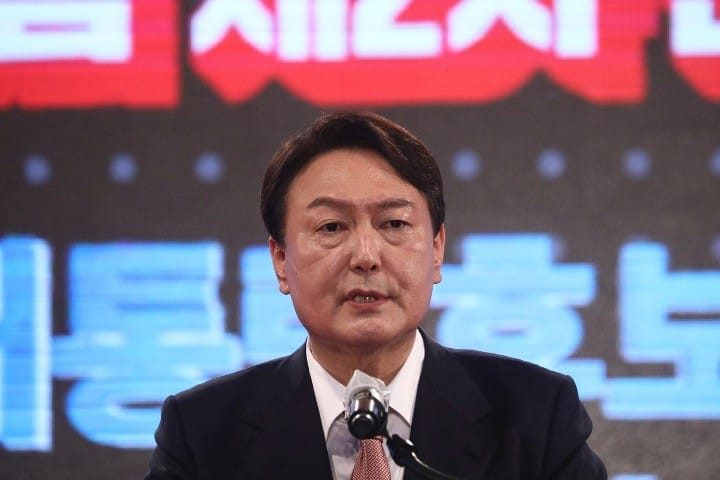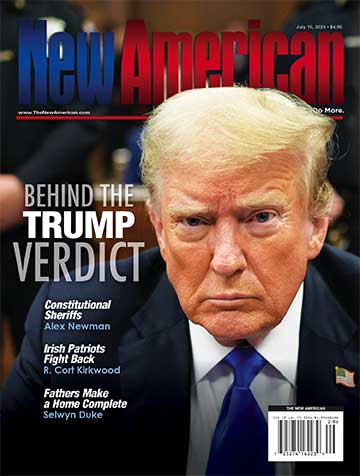
SINGAPORE — In November 2022, South Korea’s President Yoon Suk-yeol pledged to enhance weapons exports and secure trailblazing defense technologies as he strives to encourage the country’s weapons industry to become the world’s fourth-largest arms exporter, after the United States, Russia, and France.
For the first time since assuming office in May, Yoon chaired a meeting on promoting defense exports and exploring ways to shift the centerpiece of the industry from domestic supplies to exports.
“The defense industry is a new future growth engine and the pivot of the high-tech industry,” Yoon told the meeting held at Korea Aerospace Industries, South Korea’s only warplane developer, situated in the southeastern city of Sacheon. “With the intensifying competition for technological supremacy, we need to secure technological competitiveness to develop game-changing weapon systems for future wars.”
He urged the industry to enhance the conditions for research and investment by defense contractors and to construct an ecosystem that can develop autonomously by creating a more export-oriented industry structure.
Amid North Korea’s nuclear provocations, Yoon has pledged to enhance security collaborations with European countries sharing the values of democracy and market economies while boosting his country’s defense industry. He attended a NATO summit in Spain in June as an observer and cautioned against threats to those values.
More and more countries, such as Australia and Norway, are stepping up defense cooperation. These attempts would boost South Korea’s capability to counter North Korea’s provocations while contributing to peace and stability on the global stage, Yoon said.
“Some say that there might be a vacuum in our military force due to defense exports as part of their political offensive, but the government will maintain a thorough military readiness posture while actively supporting those exports,” Yoon added.
The South Korean government has been ramping up its defense technology sector and increasing arms sales overseas, especially in Asia. The country’s arms exports more than tripled, from US$1.2 billion from 2011 to 2015, to US$3.8 billion from 2016 to 2020, based on data from the Stockholm International Peace Research Institute (SIPRI).
The figure increased to US$7 billion in 2021, and is expected to reach US$10 billion in 2022, the Export-Import Bank of Korea revealed. A recent report by the Korea Research Institute for Defence Technology Planning and Advancement that quoted SIPRI data said that South Korea was the eighth-largest arms exporter in the world from 2017 to 2021, after the United States, Russia, France, China, Germany, Italy, and Britain.
Although South Korea’s 2.8 percent market share in 2021 was minuscule compared with the United States’ 39 percent, analysts said that the country profited from initial technology transfers from the U.S., and can currently manufacture cutting-edge weapons that are cheaper than those of its competitors.
Analysts credited South Korea’s former Moon Jae-in administration (2017 to 2022) for placing South Korea’s defense market on the global arena by increasing defense expenditures and collaborating with private companies to increase domestic supplies so that the excess could be sold to foreign markets.
In late 2021, the country’s Hanwha Defence made the first-ever Asian-made howitzer model to enter the Australian market — the K9 Thunder howitzer. In February 2022, Egypt purchased US$1.7 billion worth of K9s.
A U.S. official, speaking on condition of anonymity to discuss ongoing talks, affirmed that last month Washington wanted to purchase South Korean 155mm artillery shells to send to Ukraine. The Wall Street Journal reported that the agreement would entail 100,000 rounds.
The official said that Ukraine Security Assistance Initiative funds could be used to purchase the ammunition, but that it was determined if it would be shipped via U.S. territory.
However, South Korea’s defense ministry stated that its position of not providing lethal aid to Ukraine remains unchanged, and that the talks are being conducted “under the premise that the US is the end user.” The U.S. official cautioned that news of the talks could undermine the deal.
A U.S. ally, South Korea has taken steps not to antagonize Russia, both for economic reasons and due to Moscow’s influence on North Korea.
Though Ukrainian President Volodymyr Zelensky requested in April 2022 that South Korea provide military equipment to help Ukraine fight Russia, Yoon stated in October that Seoul has not offered any lethal weapons to Ukraine, following Russian President Vladimir Putin’s statement that indicated that such a move would ruin bilateral ties.
Yet amid increasing EU-Russia tensions, two South Korean companies inked a US$5.76 billion contract with Poland in August to export tanks and howitzers, Seoul’s arms procurement agency announced.
The contract is part of South Korea’s largest-ever arms deal, as Poland steps up its defense in the wake of the Ukraine-Russia crisis. Poland, a NATO member, has pledged to enhance its military spending and more than double the size of its army to deter any attacks.
Hyundai Rotem will ship K2 Black Panther tanks, and Hanwha Defence will send K9 self-propelled howitzers to Poland, declared the Defence Acquisition Programme Administration (DAPA). The parties did not disclose the value of the entire deal, which South Korean media approximated at up to 20 trillion won.
DAPA said the deal “is expected to contribute to our efforts to build solidarity with European countries and expand the boundaries of our security capabilities.”
Abhijit Apsingikar, a senior analyst for aerospace, defense, and security at the London-based data analytics and consulting company GlobalData, observed that South Korea, cautious of the risks of over-relying on allies for its defense, changed its focus from technology transfer to co-development of weapons in 2019. The country built its own systems that “have significant export potential in the international market.”
“The cornerstone of the South Korean defense export strategy has been its willingness to partner with local defense companies and accept local production of South Korean defense equipment in other countries, which has allowed it to not only foray into the Indian market but also the difficult Polish market,” he told The Straits Times.
Dr. Lee Jae-hyon, a South-east Asia specialist at The Asan Institute for Policy Studies in Seoul, noted that former president Moon, who stepped down in May 2022, encouraged arms sales to South-east Asia as part of efforts to increase engagement with the regional bloc.
The South Korean navy ships sent to countries like the Philippines and Vietnam were old but still more advanced than others in these countries’ fleets, and this created opportunities for future arms sales, Lee said.
South Korean weapons are also cheaper than those made in the United States, and yet “interoperability with US systems is guaranteed,” he said. “Many South-east Asian countries want to cooperate with the US when it comes to defense and security, so interoperability could be a problem if they use European, Chinese or Russian weapons. But if they buy from South Korea, interoperability with US systems is guaranteed and it’s cheaper, so that would be attractive for South-east Asian countries.”
Dr. Lyle Goldstein, director of the Asia Engagement program at the Washington-based think tank Defense Priorities, said it is “understandable that South Korea wants to capitalize on this new market niche.” Yet he cautioned that a large-scale expansion is “not conducive to South Korea’s peace policy.”
There is also a major concern about a potential arms race in the region, Goldstein said. “No doubt China, as a major power broker in the South-east Asia region, could be increasingly perturbed about South Korea’s role in arming regional states.”
However, another analyst for aerospace, defense, and security at GlobalData, Rouble Sharma, dismissed the arms-race concern, pointing out that South-east Asian nations are already cooperating on defense issues. “Any arms race, at this point, would be to gain access to technologies that could bring some parity in capabilities to protect their territorial integrity and rights over their exclusive economic zones from larger powers like China, and not against each other,” she said.



